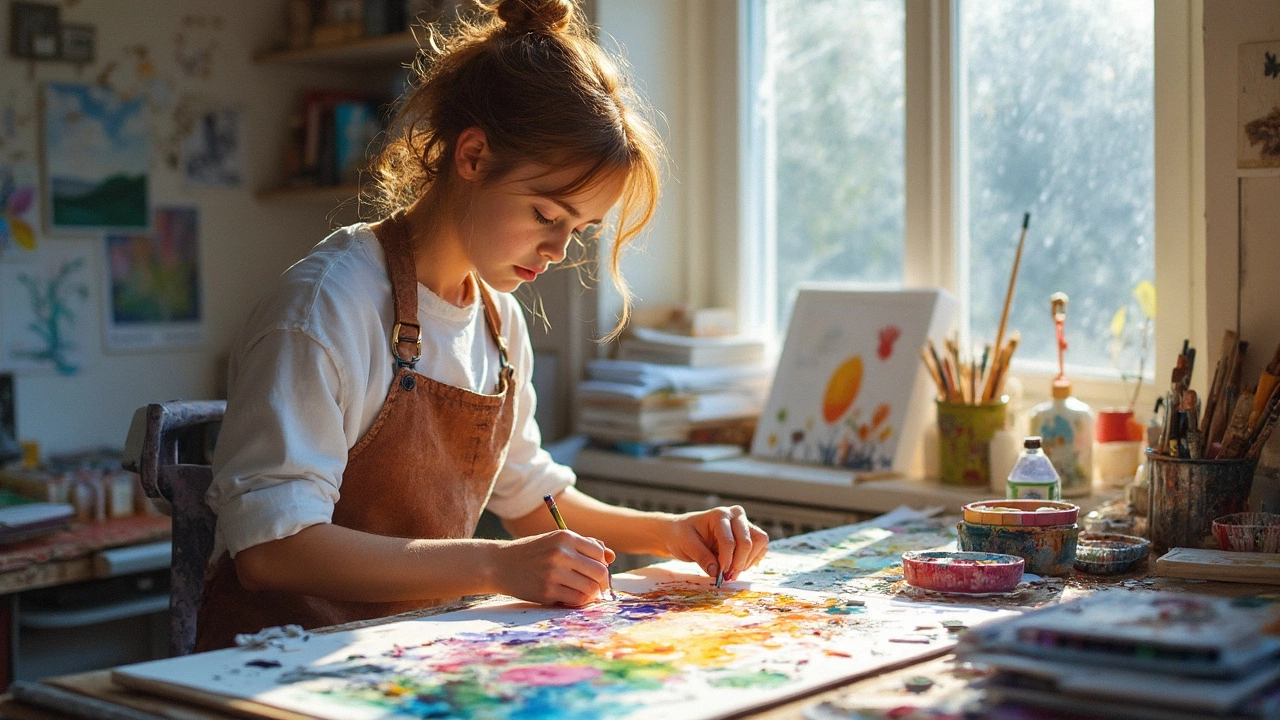Watercolor Weaknesses – Common Problems and How to Fix Them
If you’ve ever felt stuck with a watercolor that looks flat, bleeds oddly, or just won’t behave, you’re not alone. Watercolor has a reputation for being tricky, but the so‑called "weaknesses" are really just habits you can change. Below we break down the biggest hiccups and give you clear steps to get better results fast.
Flat Washes and Lack of Depth
One of the first things new watercolorists notice is a wash that looks like a single tone of gray. The issue isn’t the paint itself; it’s the way you layer color. Start with a light wash, let it dry, then add a second layer that’s a shade or two darker. Use a slightly more concentrated pigment for the second pass and paint in the direction of the light source. This simple two‑step approach creates depth without making the paper soggy.
Unwanted Bleeding and Hard Edges
Bleeding happens when too much water runs into a dry area. The cure is to control moisture. Before you begin a new shape, dab the paper with a dry brush or a clean cloth to soak up excess water. If you need a hard edge, let the first layer dry completely, then place masking fluid or a piece of tape along the line you want to keep clean. Paint over it, and when you remove the tape, the edge stays crisp.
Pigment Lifts That Won’t Come Off
Ever tried to lift a mistake only to see the color stubbornly cling? The trick is to use a clean, damp sponge while the paint is still wet. Gently press and dab – don’t scrub – because scrubbing pushes pigment deeper into the paper. If the paint has already dried, lightly mist the area with water, wait a second, then use a brush to lift the color. You’ll see a lighter spot appear, letting you re‑work the area.
Grainy Textures and Uneven Coverage
Sometimes watercolor looks speckled, especially when you use cheap paper or over‑work a spot. Choose a heavyweight, 140lb (300gsm) paper with a smooth surface for detailed work. When you apply pigment, avoid excessive back‑and‑forth strokes; instead, lay down the wash in smooth, even strokes and let it settle. If graininess persists, add a droplet of glycerin to your mix – it helps the pigment flow more evenly.
Colors Looking Muddy
Muddy colors usually result from mixing too many hues together. Keep your palette simple: pick three to four colors that work well together and mix only when needed. Test each mix on a scrap piece of paper before applying it to your painting. If a mix looks dull, add a small amount of its complementary color to brighten it up again.
Remember, the so‑called "weaknesses" of watercolor are just habits you can tweak. By managing water, choosing the right paper, and keeping your palette focused, you’ll turn those frustrating moments into opportunities for growth. Try one tip today, see the difference, and keep experimenting. Your watercolors will start looking richer, cleaner, and more vibrant – no magic required.

13 Feb 2025
Watercolor painting, while a popular medium for its subtlety and flexibility, comes with its own set of challenges. Artists often find watercolor tricky due to its unpredictability and the lack of control compared to other mediums. Traditional techniques might lead to unexpected mishaps, adding a layer of complexity to the creative process. Exploring these weaknesses can help artists better anticipate and manage the medium's quirks. With practical tips, artists can enhance their watercolor skills and tackle its unique challenges head-on.
Continue reading...
